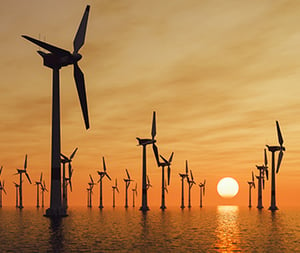Wind tech patents: the key to market leadership
 The foundations for the market positions in this sector are being laid now. By being the first to develop new technologies and properly protecting them companies can secure and retain their position for a long time to come. This requires investment in patent protection. A good patent lasts a long time and pays for itself, as I know from my experience as a partner and Patent Attorney at EP&C Patent Attorneys.
The foundations for the market positions in this sector are being laid now. By being the first to develop new technologies and properly protecting them companies can secure and retain their position for a long time to come. This requires investment in patent protection. A good patent lasts a long time and pays for itself, as I know from my experience as a partner and Patent Attorney at EP&C Patent Attorneys.
Making the most of patenting
When a patent is drafted smartly and broadly it can be effectively used for both today's innovations and future ones. Consider, for example, technologies that enable installation under higher swell conditions. Or technologies that enable installation without disturbing fish. There already are some great alternatives to installation using jackup rigs which are often too small for modern, large wind turbines and also have to be jacked up at each location which makes them slow. And because the turbines are being placed further and further away from the coast, the water is deeper and deeper and the legs have to be longer and longer.
By being at the forefront of the development and protection of technologies that help solve challenges such as increasing size, increasing depth, costs and logistics, you will secure a solid position in the wind energy sector. It will ensure that those parties who have properly protected their technologies are the first to get new orders. This means that the investment in the patent application actually pays for itself. In addition, these investments are relatively low compared to the large market potential of offshore wind.
Game of chess
Right now, a great deal of money is being invested in wind energy. As a result, innovations are moving fast. An invention that seems significant now may not necessarily still be significant ten years from now. Engineers come up with new insights, scale continues to increase and requirements change.
These days when applying for a patent it is important to take this into account. A patent application is a bit like a game of chess: you have to anticipate the next development. If I formulate my innovation like this, what will the competition do? Can the wording of the patent withstand new insights? Am I not infringing existing patents? A good - and therefore broad - patent ensures that expensive investments in this technology are recouped and that the patent holder's strong position continues to be assured even with new insights. ________________________________________
Walter Hart is going to write a column for Windenergie-nieuws.nl together with colleague Matthijs van der Linden. If you have any specific questions with regard to patents for innovative wind-related technologies, please send an e-mail to: walter.hart@epc.nl

About the author
My father was a successful inventor and I have been raised with technical creativity throughout my childhood. However, I always knew that was not enough for me. I like language, law, business &...
More about Walter >